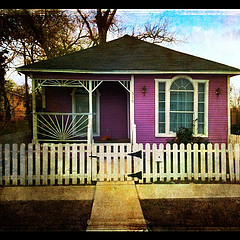
For many, the “American Dream” means owning a comfortable home in a nice neighborhood, and that idea brings a certain Mellencamp tune to mind.
The song nods to a deeper point: the history of American housing policy from the New Deal and the G.I. Bill onwards was often defined by who couldn’t get a little pink house. In fact, racial biases among policymakers and bureaucrats made it difficult or impossible for minorities to get support for housing in white neighborhoods (For a great account of this history, see Ira Katznelson’s book When Affirmative Action Was White, or his recent blog post over at The Scholars Strategy Network).
Today’s housing policies may be flipping the script on this story, but not necessarily in a good way.
The Atlantic Cities reports new research from NYU Sociologist Jacob Faber on the 2006 housing bubble that preceded the massive economic crash and kickoff to the U.S. “Great Recession” in 2008. It turns out that during this bubble, in addition to denying home loans to racial minority groups, banks were also targeting minority groups for lower quality loans. The article reports:
Black and Hispanic families making more than $200,000 a year were more likely on average to be given a subprime loan than a white family making less than $30,000 a year… blacks were 2.8 times more likely to be denied for a loan, and Latinos were two times more likely. When they were approved, blacks and Latinos were 2.4 times more likely to receive a subprime loan than white applicants.
Faber adds that the trend doesn’t just deny support to these minority groups, it actually ignores their financial successes.
…this data offers another illustration that middle-class blacks have often not been able to leverage their income status for the same benefits as middle-class whites.
Ain’t that America?

Comments 1
Friday Roundup: August 30, 2013 » The Editors' Desk — August 30, 2013
[...] “Little Pink Subprimes,” by Evan Stewart. NYU’s Jacob Faber talks to the Atlantic Cities about the wealth gap and the housing bust. [...]